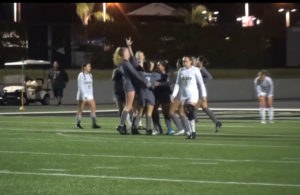- 2019/2020 Recap: Lady Scots Conquer First Round of CIF!
- 2019 Recap: Justin Flowe Wins the Dick Butkus Award
- Upland Lady Scots Have Their Revenge
- What is BBCOR?
- Tommy John, A Name To Be Feared
- The Game Plan
- Too Much Tackle?
- Is Cheer A Sport?
- Transgender Inclusion in Youth Sports
- Are You Counting Sheep Right?
A Dangerous Game!
- Updated: May 22, 2014
Everything in our society has become “SportsCenter” type of moments. The biggest hits, collisions, wrecks, homeruns. No matter the circumstance, people are drawn to these items. The flip side, in some sports even at the professional level these “SportsCenter” moments have drawn attention to the potential danger that athletes of all ages face in sports. Who is winning and losing in the report card? The results might surprise you.
Since having the spot light thrust upon them, hockey and football are the leaders on every level in doing all they can to make their sport safe for the athletes that play. Regardless of age, it has been a conscious effort of every company, team, association and volunteer to ensure safety. Those sports? Football and Hockey. Ironically, because if asked, those would be the top two sports chosen by parents that their child would not be allowed to participate. However, it is these two sports that are the true pioneers in protecting their youth leagues. Who scored the worst? Baseball.
Baseball, because the highlights that are shown on TV have nothing normally to do with massive collisions and the game is riddled with other safety issues such as HGH and steroids; their safety measures for youth are basically non-existent. However, it is their dangers and challenges that put children at the highest risk of all sports.
The risk associated with concussions and other head, mouth, and trauma injuries are alive, prevalent, but not being monitored by any governing body or association for T-Ball, PeeWee, Little League, Pony League, and others. From the helmets, bats, balls, gloves and other protective gear, it is flat out ignored on every level. Why? There are a multitude of answers, but ego is the one that needs to be considered.
Youth could be using an assortment of balls from development on up. As our children progress in their skill and acumen for the game, the balls, bats, and helmets can progress. In fact, why wouldn’t the association or team create the habit of a helmet even in T-Ball? The answer is they should.
The risk of concussions and trauma is most significant in baseball. From the strength and inaccuracy of throw and pitches, to the weight and thrust of the bat, to the skill level of the child. There are so many organizations in the US today that will layout the proper procedure for all organizations to properly keep youth safe, but it falls upon deaf ears. Ego, playing real ball, hard ball, baseball, the way it used to be played prevails. Wanting to shy away from criticism many parents will choose not to speak up at the serious dangers, ultimately putting the child at significant risk.
The one area that needs to be highlighted in developmental baseball are the travel tournaments and teams. These uber-competitive environments, are 150x more competitive than your normal league. They do hold high impact collisions at home and other bases. The use of “major league” like balls, their personal equipment does not properly protect the children during these intense games. It is at these venues, that safety should be highlighted as a much larger audience would have to adopt the safety rules and regulations at home, in their home leagues. It should be and can be the responsibility of the travel tournament supervisors to ensure that all teams participating are abiding to the same safety rules at home.
You would be astounded at the injuries that occur to the sheer personal disregard to a commonsense approach to our youth and how they play.
___________________________________________________________________________________________________
Author: Rick Bouch
Rick Bouch is a former college and professional football player and former sports journalist for several publications. He currently is a freelance sports writer covering national sports news.
Copyright © 2023 KSNN. All rights reserved.









